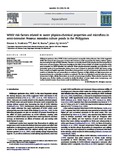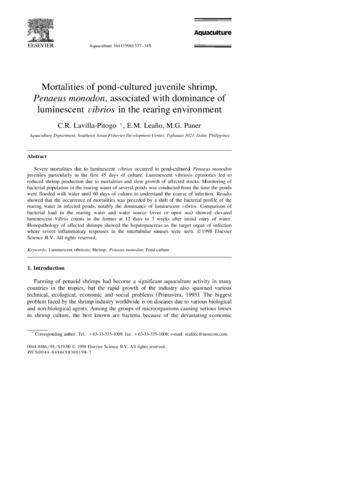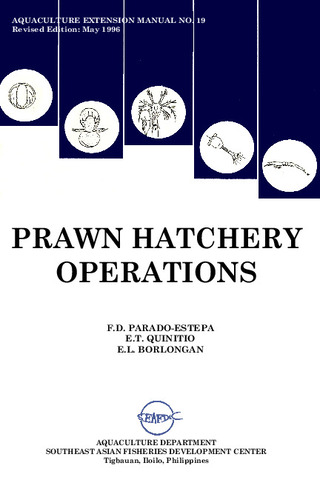WSSV risk factors related to water physico-chemical properties and microflora in semi-intensive Penaeus monodon culture ponds in the Philippines

Tingnan/
Petsa
2010Page views
587Metadata
Ipakita ang buong tala ng itemCited times in Scopus
Share
Abstract
Whitespot syndrome virus, WSSV, is the most important among the shrimp diseases. One of the suggested WSSV risk factors is the occurrence of stress since stressors could compromise the shrimp defence system thus increasing the risk of WSSV infection. Stressors are usually related to the physico-chemical properties of both water and pond bottom. This paper investigates the effect of some biotic and abiotic components of the pond ecosystem on WSSV infection and outbreak. Water physico-chemical properties and microflora of 91 production cycles of 8 semi-intensive shrimp farms were analyzed to determine WSSV risk factors, using factor analysis and logistic regression. Fluctuations of temperature and pH are important risk factors that will result to an infection but not necessarily to an outbreak. Exposure to high salinity and high temperature are important factors for an infection to result to an outbreak. The risk of an infection is reduced when the water temperature is high, salinity fluctuations are small, and percentage of yellow Vibrio colonies is greater than the green ones. Further studies are needed to clarify the effects of water depth, water transparency, and various bacterial counts; these factors could be individual or interactive.
Suggested Citation
Tendencia, E., Bosma, R. H., & Verreth, J. A. J. (2010). WSSV risk factors related to water physico-chemical properties and microflora in semi-intensive Penaeus monodon culture ponds in the Philippines. Aquaculture , 302(3-4), 164-168. https://doi.org/10.1016/j.aquaculture.2010.03.008
Paksa
Taxonomic term
Mga koleksyon
- AQD Journal Articles [1249]
Related items
Showing items related by title, author, creator and subject.
-
Current status of shrimp farming and diseases in Cambodia
Lang, Ouch; Sothea, Mey (Aquaculture Department, Southeast Asian Fisheries Development Center, 2016)The farming of penaeid shrimps in Cambodia began in 1989 and has significantly expanded since 1991. Shrimp cultivation has been carried out in the four coastal provinces, i.e. Kampot, Kep, Preah Sihanouk Ville, and Koh ... -
Mortalities of pond-cultured juvenile shrimp, Penaeus monodon, associated with dominance of luminescent vibrios in the rearing environment
Lavilla-Pitogo, Celia R.; Leaño, Eduardo M.; Paner, Milagros G. (Elsevier, 1998)Severe mortalities due to luminescent vibrios occurred in pond-cultured Penaeus monodon juveniles particularly in the first 45 days of culture. Luminescent vibriosis epizootics led to reduced shrimp production due to ... -
Prawn hatchery operations
Parado-Estepa, Fe D.; Quinitio, Emilia T.; Borlongan, Emeterio L. (Aquaculture Department, Southeast Asian Fisheries Development Center, 1996-05)The manual, an updated version of the 1984 SEAFDEC/AQD manual, presents the underlying principles and step-by-step instructions of prawn larval and post-larval rearing. The techniques described are not only applicable to ...



